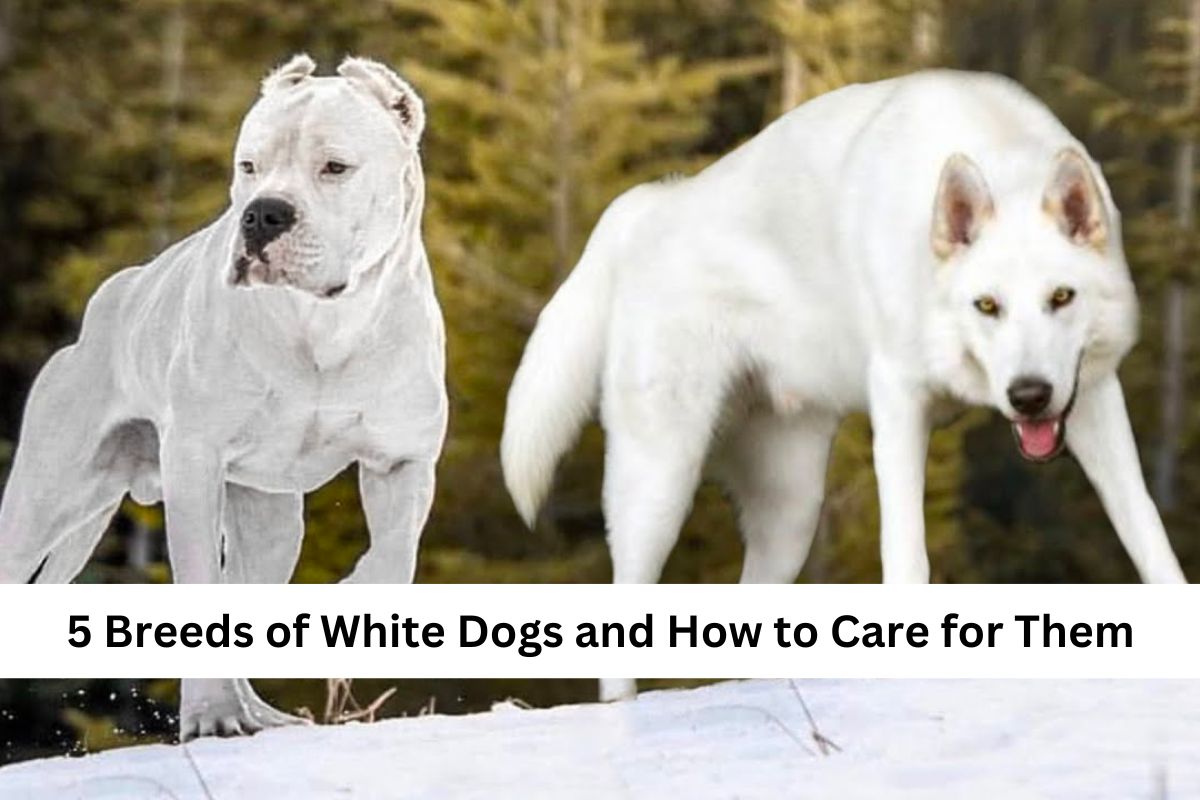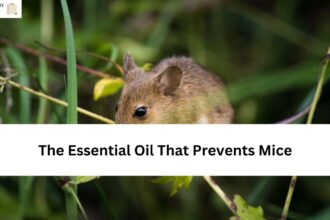White dogs have a special charm and beauty that captivates many pet lovers. Their pristine fur and elegant appearance make them stand out in any crowd. However, owning a white dog comes with its own set of responsibilities. In this article, we will explore the world of white dogs and discuss five popular breeds. We will delve into the unique characteristics of each breed and provide valuable insights on how to properly care for them. Whether you’re considering getting a white dog or already have one, this comprehensive guide will equip you with the knowledge and expertise to provide the best care possible.
1. The Majestic Samoyed: A Snowy Companion

The Samoyed is a breed renowned for its luxurious white coat and friendly nature. Originating from Siberia, this fluffy companion is often associated with the cold regions of the world. Here are some key points to consider when caring for a Samoyed:
Grooming: Maintaining the Arctic Beauty
To keep your Samoyed’s coat looking pristine, regular grooming is essential. Brushing their double-layered coat at least twice a week helps prevent matting and removes loose fur. Remember to pay extra attention to their paws, as they tend to accumulate debris. Additionally, monthly baths with a gentle dog shampoo will keep their coat clean and shiny.
Exercise: A Winter Wonderland of Activities
Samoyeds are an active breed that thrives on physical and mental stimulation. Engage them in daily exercise, such as brisk walks or play sessions in a securely fenced yard. These dogs also enjoy activities like agility training, obedience classes, and even pulling sleds. Be mindful of their exercise routine and adapt it to their age and overall health.
Health Care: Nurturing the Snow Angel
Regular visits to the veterinarian are vital for maintaining your Samoyed’s health. Vaccinations, flea and tick prevention, and regular check-ups ensure their well-being. Additionally, be aware of breed-specific health concerns such as hip dysplasia and progressive retinal atrophy (PRA). Early detection and proactive care are crucial for managing these conditions.
Training: Taming the Arctic Spirit
Samoyeds are intelligent dogs but can also be independent thinkers. Consistent and positive reinforcement training methods work best for this breed. Socialization from an early age helps them develop good manners and become well-adjusted members of the family. Enrolling in puppy classes or seeking guidance from a professional dog trainer can greatly assist in training your Samoyed.
Nutrition: Feeding the Snowflake
Maintaining a balanced diet is essential for your Samoyed’s overall health and vitality. Provide them with high-quality dog food that meets their nutritional needs. Consult your veterinarian to determine the appropriate portion sizes and feeding schedule based on your dog’s age, size, and activity level. Remember to provide fresh water at all times.
2. The Lovable Bichon Frise: A Fluffy Cotton Ball

The Bichon Frise is a small and charming breed known for its curly white coat and cheerful personality. These little balls of fluff make wonderful companions and adapt well to various living situations. Here’s how you can care for your Bichon Frise:
Grooming: The Art of Fluffiness
Bichon Frises have a hypoallergenic coat that requires regular grooming to keep it looking fabulous. Daily brushing prevents matting and tangling, and it also helps distribute natural oils throughout their coat. Regular professional grooming sessions are recommended to maintain their unique appearance. Additionally, routine ear cleaning and nail trimming are essential for their hygiene.
Exercise: Small Size, Big Energy
Although Bichon Frises are small, they are active and energetic dogs that require daily exercise. Regular walks, playtime, and interactive toys help keep them physically and mentally stimulated. Remember to provide a safe and secure area for them to explore and play, as they are prone to chasing small animals due to their hunting instincts.
Health Care: A Healthy Cotton Candy
Regular veterinary check-ups, vaccinations, and preventive care are essential for your Bichon Frise’s well-being. Like many small dog breeds, Bichons are prone to dental issues, so maintaining good oral hygiene is crucial. Regular teeth brushing and annual dental cleanings can help prevent dental disease. Additionally, keep an eye out for common health concerns such as allergies and patellar luxation.
Training: Social Butterflies
Bichon Frises are known for their friendly and sociable nature. Early socialization is key to ensure they grow up to be well-rounded dogs. Positive reinforcement training methods work best with this breed, as they respond well to praise and rewards. Consistency and patience are important when teaching them basic commands and good manners.
Nutrition: The Fluffiest Mealtime
Choosing the right food for your Bichon Frise is crucial for their overall health and well-being. Opt for high-quality dog food that meets their nutritional needs. Consider their age, size, activity level, and any specific dietary requirements or allergies. Consulting your veterinarian can help you determine the best feeding routine and portion sizes for your furry friend.
3. The Elegant Maltese: A Regal White Companion

The Maltese is a small, elegant breed with a long, silky white coat. Known for their charming personality, these dogs have captured the hearts of many throughout history. Let’s explore how to care for your Maltese:
Grooming: The Silken Elegance
The Maltese coat requires regular maintenance to keep it beautiful and free from tangles. Daily brushing with a soft slicker brush helps prevent matting and keeps their coat looking pristine. Regular professional grooming is recommended to maintain their iconic long hair. Pay special attention to their eye area, as tear stains can occur due to their eye shape.
Exercise: Small but Spirited
Maltese dogs may be small, but they have a surprising amount of energy and need regular exercise to stay happy and healthy. Daily walks and interactive play sessions are essential for burning off their energy. Due to their small size, it’s important to provide them with a safe and secure environment both indoors and outdoors.
Health Care: Regal Well-Being
Regular veterinary check-ups are crucial for monitoring your Maltese’s health. Vaccinations, preventive care, and parasite control are essential for their well-being. Dental care is particularly important for Maltese dogs, as they are prone to dental problems. Regular teeth brushing and annual dental cleanings can help prevent dental disease.
Training: The Royal Scholar
Maltese dogs are intelligent and eager to please, making them trainable and responsive to positive reinforcement. Start training and socializing your Maltese from a young age to help them develop good manners and be well-adjusted. Teaching basic commands and providing mental stimulation through interactive toys or puzzle games can keep them mentally sharp.
Nutrition: The Royal Feast
Feeding your Maltese a balanced and nutritious diet is essential for their health. Choose high-quality dog food that suits their age, size, and any specific dietary requirements. Maltese dogs can be prone to allergies, so be mindful of any sensitivities or intolerances they may have. Consult your veterinarian to determine the best feeding routine and portion sizes for your furry companion.
4. The Graceful Great Pyrenees: A White Guardian

The Great Pyrenees is a majestic breed with a thick white coat and a gentle temperament. Originally bred as livestock guardians, they possess a natural instinct to protect. Here’s how to care for your Great Pyrenees:
Grooming: Taming the Fluffy Beast
Great Pyrenees have a thick double coat that requires regular grooming to keep it healthy and manageable. Weekly brushing is essential to remove loose fur and prevent matting. During shedding seasons, daily brushing helps minimize excessive shedding. Be prepared for seasonal shedding, as these dogs “blow their coat” to prepare for temperature changes.
Exercise: A Gentle Giant’s Workout
Despite their large size, Great Pyrenees have moderate exercise needs. Daily walks and play sessions are important for their physical and mental well-being. However, be cautious not to overexert them, especially in hot weather, as they are prone to heat sensitivity. Supervised outdoor time in a securely fenced yard allows them to explore and stretch their legs.
Health Care: Safeguarding the Guardian
Regular veterinary care is crucial for maintaining your Great Pyrenees’ health. Vaccinations, parasite prevention, and routine check-ups are essential. Great Pyrenees dogs are prone to certain health conditions, including hip dysplasia, bloat, and heart issues. Regular health screenings and early intervention can help manage these conditions effectively.
Training: Nurturing the Guardian Instincts
Great Pyrenees dogs have a strong instinct to protect and guard. Proper socialization from an early age is vital to help them differentiate between real threats and everyday situations. Obedience training and consistent leadership are important to ensure they understand their boundaries and become well-behaved members of the family.
Nutrition: Fueling the Guardian’s Strength
Providing a well-balanced diet is crucial for supporting your Great Pyrenees’ growth and maintaining their overall health. Choose a high-quality dog food that suits their age, size, and activity level. Be mindful of their tendency to gain weight and adjust portion sizes accordingly. Regularly monitor their weight and consult your veterinarian for guidance on feeding and dietary needs.
5. The Playful West Highland White Terrier: A Spirited Companion

The West Highland White Terrier, often referred to as the Westie, is a small and lively breed known for its friendly nature and iconic white coat. Let’s explore how to care for your Westie:
Grooming: The Westie’s Signature Look
Westies have a dense, double-layered coat that requires regular grooming to maintain their signature appearance. Weekly brushing helps remove loose fur and prevents matting. Professional grooming every four to six weeks is recommended to keep their coat tidy and maintain their unique shape. Regular ear cleaning and nail trimming are also essential for their hygiene.
Exercise: Small Dog, Big Energy
Despite their small size, Westies are energetic dogs that require regular exercise to stay happy and healthy. Daily walks and interactive play sessions are essential for burning off their excess energy. They also enjoy activities like agility training and mental stimulation through puzzle toys or interactive games.
Health Care: Keeping the Westie Fit
Regular veterinary check-ups, vaccinations, and preventive care are important for your Westie’s well-being. Westies are prone to certain health issues, including skin allergies and dental problems. Maintaining good oral hygiene and addressing any skin issues promptly can help prevent complications. Regular grooming sessions also provide an opportunity to check for any skin abnormalities or signs of infection.
Training: Unleashing the Westie’s Potential
Westies are intelligent and eager to learn, making them responsive to positive reinforcement training methods. Start training and socializing your Westie from a young age to ensure they develop good manners and become well-rounded dogs. Keep training sessions interesting and engaging to hold their attention, and be consistent with your expectations and rewards.
Nutrition: Satisfying the Westie’s Appetite
Choosing a nutritious diet is essential for your Westie’s overall health and well-being. Opt for high-quality dog food that meets their nutritional needs. Consider their age, size, and activity level when determining portion sizes and feeding frequency. Consult your veterinarian for recommendations and monitor their weight to avoid overfeeding.
FAQs
Q1: Are white dogs more prone to skin issues?
A1: While it’s not exclusive to white dogs, certain breeds with white coats may be more susceptible to skin issues due to increased sensitivity to sun exposure. Regular grooming, sun protection, and proper nutrition can help prevent skin problems.
Q2: How often should I bathe my white dog?
A2: The frequency of bathing depends on the breed and individual needs. Generally, bathing your white dog once every 4-6 weeks is sufficient. Over-bathing can strip their coat of natural oils, leading to dryness and irritation.
Q3: Are white dogs more prone to deafness?
A3: Some white dog breeds, such as the Dalmatian, have a higher incidence of deafness. However, it is not a blanket characteristic for all white dogs. Breeds vary in their genetic predispositions, so it’s important to research specific breeds’ health concerns.
Q4: How can I prevent tear stains on my white dog?
A4: Tear stains are more visible on white dogs due to their coat color. Regularly cleaning your dog’s face and tear ducts can help prevent tear stains. Consult your veterinarian for safe and effective tear stain removal products.
Q5: Can white dogs be more prone to sunburn?
A5: Yes, white dogs with thin or light-colored coats may be more susceptible to sunburn. Applying pet-safe sunscreen and providing shade during peak sun hours can help protect their skin from harmful UV rays.
Q6: Are white dogs more high-maintenance than dogs of other colors?
A6: The maintenance needs of a dog depend on various factors, including breed, coat type, and individual characteristics. While white dogs may require specific grooming routines and potential considerations for sun protection, it is not necessarily an indicator of higher maintenance overall.
Conclusion
Owning a white dog comes with its own set of responsibilities, but the joy and love they bring into our lives make it all worthwhile. In this article, we explored five popular breeds of white dogs and discussed how to care for them. From the majestic Samoyed to the playful West Highland White Terrier, each breed has its unique traits and requirements.
By understanding their grooming needs, providing regular exercise, maintaining their health through proper veterinary care, and utilizing positive reinforcement training methods, you can ensure your white dog lives a happy and healthy life. Remember, every dog is an individual, so be sure to tailor your care approach to suit their specific needs.
Embrace the beauty of white dogs and embark on a rewarding journey filled with love, companionship, and cherished memories.





